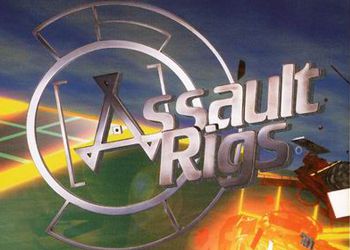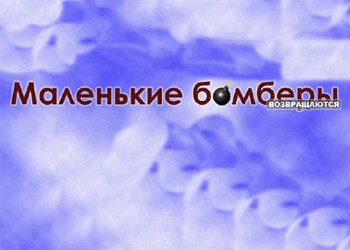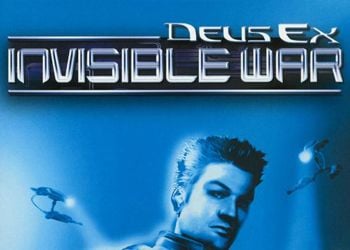After exploring the surroundings, you will find a cave with 3 barrels. To get there it is necessary to release water in all caves. (DO NOT TRY, THE SKIN IS NOT WORTHING. There is an ax, though it is unique, and fries.) It’s very easy, you just have to stand above the place where the gnome says “Wait really deep” and there will be a place where you can dig, start dripping from leading there, do not be afraid that nothing will happen to your gnome, all now remains to go down and take the contents of the barrels.
In the ancient fortress of fidgets, there is a room with portraits that must be placed correctly in order for the crystal doors to open. The placement algorithm is as follows:
1.Portrait of a young gnome
2.the gnome in the red hat
3.the gnome in the blue hat
4. Snow White
5.the gnome is the grandfather
6.dwarf in a lilac hat
7.Red gnome
8.the gnome is blond
In the world of grass, if you dig below to the right of your cave (this is not far), you will find fairies: they will give a unique two-handed, the current must be soaked first by the trolls;) Before starting the water, be sure to clear the tunnel.
If you are reluctant to fight with the trolls, you can put everyone with one gnome. True, it will take quite a long time. Make 3 or 4 traps in the bricklayer’s workshop and place them in the tunnel next to the Troll Castle. And then “catch on live bait” – run up to the troll with one gnome until he rushes after him, and lead him into the tunnel with traps. Three traps in a row finish off the troll completely. Only this must be done on horses, or boards. Trolls run fast.
With demons from the crystal world, there is nowhere easier to fight. Get up so that there is a vertical tunnel between you – they cannot get through it. And shoot. You can even use a slingshot. For three demons shot, up to +4 to the indicator is given.
In the game, everything is done in simple scripts from the data \ scripts folder
The entire tech tree in the misc / techtreetunes.tcl folder or something like that. Top line – materials second-experience. Almost everything is written in German. pilz-mushroom hut-hat stamm-nzhka stein-stone eisen-iron kohle-coal erz-ore hamster-hamster. Everything else is clear. If several words are written together, read together (golderz – gold ore). All this can be edited as you like.
Here is a small addition to the passage: After passing through the portal, you will find yourself in the Scondinavian “Asgard” there will be three islets hanging in the air, similar to rainbow bridges, yes, names of rainbows! You will appear on the left island, there will be a cave with barrels in the barrels of Elizdora. In general, barrels are everywhere, they contain weapons and books on its operation. The elf will grow to the size of a giant. You need to shoot her down by knocking out her four wings. The lower ones are recommended to be knocked out on the rainbow, you can only knock out the side with which it does not strike with lightning; Her flight path is as follows – after the attack of the left rainbow, it flies to the right side of the castle, after the right to the left, attacks first the lower tier, then the upper one attacks the upper one. After the victory, the dwarfs will fill up barrels of ale and they will finally grow beards.
Almost everyone knows about the techtreetunes file, but almost no one knows how to edit it, but here’s how: here, for example, “Farm”
“Farm” {
set tttmaterial_Farm – {Materials are not recommended to completely remove the line because the object will not be produced}
set tttinvent_Farm – {The experience needed for research can be removed, but two brackets are left}
set tttgain_Farm {experience gained when producing an object}
set tttinfluence_Farm – {the same thing but needs to be changed}
set tttitems_ {Farm produced materials can be changed all the same will give nothing}
set tttpreinv_ {Farm is the same}
set tttfow_x -? But it is not recommended to change
set tttfow_y -? also
And here is how it is distributed at the power stations
set tttenergyrange_Laufrad Coverage area
set tttenergyclass_Laufrad energy class
set tttenergymaxstore_Laufrad capacity
set tttenergyyield_Laufrad also capacity
Here is the distribution of energy consuming buildings
set tttenergyclass_Schmiede Energy class 0 to 3
set tttenergycons_Schmiede energy consumption
Do not try to fix anything if you are not confident in your abilities, as this can lead to freezes, crashes or incorrect operation of the program! Make sure to back up the file before making any changes!
Hacking the Dwarves
Part 1
techtreetunes.tcl file
Hello my little hacking lovers. Today we will explore how to:
1. The manufactured product or structure did not require any materials.
1.1 The product or structure being manufactured needed the materials of your choice.
2. Structures or products were invented without specific knowledge.
3. When working, the gnome’s skills developed faster.
4. In any building, all buildings and products were invented and produced.
5. The building did not need electricity.
5.1 A wheel, steam engine or Reactor produced energy for the entire map.
5.2 A Wheel, Steam Engine, or Reactor contained more energy.
1. We select any product or structure (the complete list of names used in the game is in table 1). We find the line:
set tttmaterial_ “name” {…}
In curly brackets, a list of required materials. And we delete everything in the brackets. Attention! Never remove the parentheses themselves!
Example:
It takes 4 legs to build a Farm.
set tttmaterial_Farm {Pilzstamm Pilzstamm Pilzstamm Pilzstamm}
Change to
set tttmaterial_Farm {}
And that’s it! The farm is built just like that!
1.1 We do everything as described above, but insert any other material into empty brackets.
Example:
It takes 4 legs to build a Farm, but we want to make it out of 1 Hamster.
set tttmaterial_Farm {Pilzstamm Pilzstamm Pilzstamm Pilzstamm}
Change to
set tttmaterial_Farm {Hamster}
And that’s it! To build a Farm, you need 1 Hamster!
2. For the invention of buildings or products, certain knowledge is required, in some buildings a lot of it is required and therefore you have to wait a long time. Now we will make it so that they are invented without this knowledge..
We select the structure or product that we want to change (the full list of names used in the game is in table 1). We find the line:
set tttinvent_ “name” {…}
In curly brackets, a list of required skills and their meaning. And delete everything in parentheses. Attention! Never remove the parentheses themselves!
Example:
The invention of the Lightsaber requires Alchemy 50 and Martial Art 40. (Experience is calculated by multiplying 100 by the required value of 0. ??)
set tttinvent_Lichtschwert {{exp_Energie 0.5} {exp_Kampf 0.4}}
Change to
set tttinvent_Lichtschwert {}
And that’s it! No skill required to invent the Lightsaber!
3. In the process of making a product, the gnome increases certain skills. Now we will look at how to change the number of skills and the level of their increase..
We select the product that we want to change (the full list of names used in the game is in table 1). We find the line:
set tttgain_ “name” {…}
In curly brackets, a list of the skills to increase and their meaning. And we make the necessary changes:
– number of skills
– their meaning
Attention! The number of opening brackets must be equal to the number of closing brackets!
Example:
Let’s say we want the Wood, Stone, Food and Metal skills to increase by 25 points when producing Jarrib in a Campfire..
“Grillpilz” {; // an der Feuerstelle
note!
; // an der Feuerstelle means that the Fryer is made in the Fire!
set tttgain_Grillpilz {{exp_Nahrung 0.012}}
Change to
set tttgain_Grillpilz {{exp_Holz 0.25} {exp_Stein 0.25} {exp_Nahrung 0.25} {exp_Metall 0.25}}
And that’s it! Now, when producing 1 Jarrib in the Campfire, we will increase the above skills by 25 points!
4. And now you will learn how to add the number of manufactured products in the building.
We select the building that we want to change (the full list of names used in the game is in table 1). We find the line:
set tttitems_ “title” {…}
In curly brackets, a list of manufactured products. And we remove or add the required products. Attention! The number of products should not exceed 8 at 800×600 screen resolution and 14 at 1024×768! Otherwise, they just won’t fit!
Example:
If we want our Bonfire, besides Jarrib, Roast, Tent, etc. also produced Reactor, Gym, Crystals, etc., then
set tttitems_Feuerstelle {Grillpilz Grillhamster Zelt Hauklotz Steinmetz Feuerstelle}
Change to
set tttitems_Feuerstelle {Grillpilz Grillhamster Zelt Hauklotz Steinmetz Feuerstelle Reaktor Dojo Kristall Unsichtbarkeitstrank Jungbrunnentrank Fruchtbarkeitstrank}
And that’s it! Now we have a bunch of useful things being produced in the Fire.!
5. In order for the building not to need electricity, we will do the following manipulations. We select the building that we want to change (the full list of names used in the game is in table 1). We find the line:
set tttenergyclass_ “name” “digit from 0 to 3”
The number means the class of the structure:
0 – a building that does not require electricity
1 – requiring a minimum Wheel or Water Wheel
2 – Minimum Steam Engine
3 – Reactor requiring minimum
Change to 0. Now this structure does not require electricity, but it still absorbs it, then we find the following line:
set tttenergycons_ “name” “value”
We also change the “value” to 0. Attention! This change will only affect newly built buildings, existing ones will still need energy!
Example:
If we want the Luxury kitchen not to require electricity, then:
set tttenergyclass_Luxuskueche 3
set tttenergycons_Luxuskueche 20
Change to
set tttenergyclass_Luxuskueche 0
set tttenergycons_Luxuskueche 0
All! Luxurious kitchen does not require electricity!
5.1 If you had it so that when building new caves and buildings, sooner or later you go beyond the energy field and you have to build another Steam Engine or Reactor, then this section is for you.
We select a building that produces energy and which we want to change (the full list of names used in the game is in table 1). We find the line:
set tttenergyrange_ “name” “value”
“Value” characterizes the magnitude of the energy field. Change the “value” to 100000 (this should be enough).
Example:
We change the energy field of the Reactor, for this
set tttenergyrange_Reaktor 100
Change to
set tttenergyrange_Reaktor 100000
And that’s it! Now we have an energy field for the whole map!
5.2 If your Gnomes run very often and increase the supply of energy in the Wheel, Steam Engine or Reactor, and you would like them to perform more useful functions during their working hours, then there is this way.
We select a building that produces energy and which we want to change (the full list of names used in the game is in table 1). We find the line:
set tttenergymaxstore_ “name” “value”
“Value” characterizes the maximum fuel capacity. We change the “value”, for example, to 500000. And your Dwarves will not approach this building for a very long time.
Example:
We change the maximum fuel supply at the Reactor, for this
set tttenergymaxstore_Reaktor 4000
Change to
set tttenergymaxstore_Reaktor 500000
All!
6. General information
set tttmaterial – The number and names of materials needed to build
set tttinvent – The number of skills needed to invent and their meanings
set tttgain – The number of skills received by the gnome and their values
set tttitems – What items and structures this building produces
set tttpreinv – What items and structures are given when building this structure (there is no need to reinvent them)
set tttenergyclass – Required energy class
set tttenergycons – The amount of energy consumed
set tttenergyrange – Energy field radius
set tttenergyyield – The amount of energy gained from 1 unit of fuel
set tttnumber2produce – Number of produced product
Part 2
So, first of all, open the z_events.tcl file in Notepad, which is located in the \ Data \ Scripts \ Classes \ Zverg \ folder. Here, towards the end, we are looking for the //// Attributvariablen initialisieren block. Here the values of the main parameters are set: health (_Hi), hunger (_Nu), attention (_Al) and mood (_Mo). Change them up. //// allgemeine Verluste, Unterscheidung work – idle. Add three to four zeros after the decimal point in all numeric parameters of this block (up to the next two slashes), except for the fincr tll_fl_common parameter. After this procedure, your gnomes will stop asking for food, drinking, communicating, they will not spoil their mood, and they will stop complaining about lack of attention..
Now it would be nice to make the dwarves immortal. It was not possible to find how to do this completely and irrevocably, but I did it so that any opponents were killed with half a kick. To do this, open the fight.tcl file in the \ Data \ Scripts \ Init \ folder. In this file, we are interested in the last two numbers with dots (the file is wide, so use horizontal scrolling). The number on the far right indicates the minimum amount of experience required to deliver this blow. The penultimate number is the strength of this attack. Our task is to make the gnomes the strongest, and everyone else the weakest. So we change in the penultimate number 1s and 2s to nines, and in the last to zeros (I mean the integer part of the number: that is, instead of 1.2 in attack strength, you should get 9.2). To change only the gnomes, similarly you should only change the numbers in the lines of the first block before the // Geisel block. In all other blocks, make corrections so that the integer part of the penultimate number is zero: for example, instead of 2.4, it should become 0.4. I would like to emphasize that in this way you should correct ONLY the last two DECIMAL digits in each line. If the last digit is a banal zero or one (without any dots and decimal parts) – do nothing with them.
Oh yes! I promised you to make sure that the books do not disappear after reading. It’s easy.
Open the misc_items.tcl file located in the \ Data \ Scripts \ Classes \ Items \ folder and find the following text there:
method get_gain {} {
del this
return $ gain
}
and change it to:
method get_gain {} {
// del this
return $ gain
}
That’s all!
Now let’s deal with the buildings. To do this, find the techtreetunes.tcl file. It also lies somewhere in the \ Scripts folder. This file provides a complete list of all buildings and products in the game. This is where you need a dictionary..
Each building or product is described by several parameters:
set tttmaterial – the number and names of materials needed to build;
set tttinvent – the number of skills required for the invention and their values;
set tttgain – the number of skills received by the gnome and their values;
set tttitems – what items and structures this building produces;
set tttpreinv – what items and structures are given during the construction of this structure (there is no need to invent them);
set tttenergyclass – required energy class;
set tttenergycons – the amount of energy consumed;
set tttenergyrange – radius of the energy field;
set tttenergyyield – the amount of energy received from 1 unit of fuel;
set tttnumber2produce – the amount of product produced.
In the description of individual buildings or products, some lines may be missing, for example, the amount of energy consumed or the radius of the energy field. Do not be alarmed, this building simply does not require energy or produces it.
By making the necessary corrections to the description of each building, you can get interesting results. For example, you are completely unhappy with the fact that building, say, a reactor requires a lot of resources. The description of this is in the original as follows:
set tttmaterial_Reaktor {Stein Stein Eisen Eisen Eisen
Eisen Kristall Kristall Kristall Kristall Kristall Gold Gold Gold Gold}.
Just remove all the content inside the curly braces and get the line: set tttmaterial_Reaktor {}, then building the reactor will cost you absolutely free.
And if you want something different from what is usually produced in the campfire, but what is produced in the laboratory, replace the content of the set tttitems line in the description of the campfire with the content of the same line in the description of the laboratory. That’s all there is to it. With a little practice, you should be fine. The only catch is that all the names, as you probably already noticed, are in German, so you can’t go anywhere without a dictionary.
It’s the same with food. Just note that after the name of the product, the name of the structure in which the described product is produced is also indicated, since the same products can be produced by different structures. And so the patching technology is identical to the patching technology in the case of buildings.
As for the skills of the gnomes, they are indicated in this file in decimal numbers. The numbers after the decimal point show how many points a given skill will increase or how much skill is required. For example, 0.014 is 1.4 pips and 0.25 is 25 pips. Is the idea clear? Dare.
All changes made in this file will affect after loading only newly built buildings. All old buildings will work as before..
Just before making any changes, make backup copies of the modified files, so that in case of something you do not reinstall the entire game again.
Enjoy your game!




